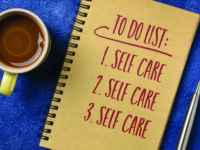By Natali Munoz-Moore
More than 1 million concussions occur each year – and children and teens are particularly susceptible. As this research becomes more known, concussions have become an important topic in homes, schools, and sports programs of all levels across the county. But how much do you know about this condition that often goes undiagnosed and can lead to severe brain injury? Read on to find out.
What is a Concussion?
The American Academy of Neurology defines a concussion as a trauma-induced change in mental status that may — or may not — involve loss of consciousness. A concussion occurs when the brain shifts inside the skull and results in temporary loss of brain function. This condition can result from a bump, blow, or jolt to the head during sports, motor vehicle accidents, and even falls at home or on the playground. “Sometimes just rapid movement of the neck can cause the brain to contuse,” said Jeff Lobosky, M.D., director of Enloe’s Neurotrauma ICU.
“Concussions are under diagnosed and happen much more frequently than most people realize, especially among young athletes,” said Lobosky, who specializes in neurosurgery. “They’re a ‘silent epidemic.’ That’s what the American Association of Neurological Surgeons calls them.”
In fact, an estimated 1.6-3.8 million concussions occur every year, and a recent study found that among high-school students, 15 percent of youths said they had suffered at least one concussion over the prior year, according to the Centers for Disease Control and Prevention. Recognizing the signs is essential, though it can be tricky.
Know the Symptoms
Signs do not always show up right away. Symptoms can appear hours, days, or even weeks after an injury. Children who suffer a concussion may experience:
• Headache
• Confusion
• Dizziness
• Nausea or vomiting
• Double vision or ringing in the ears
• Inappropriate crying or laughter
• Poor concentration and memory
• Anxiety or depression
• Sleep and mood disturbances
• Light and noise intolerance
“Concussions usually leave no lasting neurological problems, but symptoms can last for weeks or months,” Lobosky said.
Vigilance is Key
If a child suffers a blow to the head, coaches, teachers, and parents should be vigilant and perform a thorough assessment. If the child is concussed, a second head injury can cause lasting brain damage and even death, he said. That is why adults should ask children simple questions – for instance, what day is it? Or what’s the score? — if a kid is not acting like his or her usual self.
That is not to say that all concussions will require a trip to the emergency room, though. Many of them resolve on their own. However, if a child loses consciousness from a head injury, if a mild headache worsens or the kid begins to vomit, it is important to seek medical attention ASAP. Kids with mild symptoms can head home, but loved ones should check on them — and awaken them periodically if they fall asleep — to ensure they are OK.
Rest is Essential
An injured brain needs time to recover so its cells can return to normal. That is why it is essential to rest and avoid physical activity for 24 to 48 hours after an injury.
Kids who suffer a concussion can gradually return to their normal activities as long as they do not make symptoms worse. However, athletes should avoid contact sports until they are symptom-free at the full activity level.
Students need intellectual rest, too, and should decrease activities such as learning, reading, making decisions, and doing things that require mental focus or cause the brain to be overstimulated. This includes watching TV, playing video games, and going to school, work, and social events.
Enloe Lends a Helping Hand
With the prevalence of concussions, Enloe Medical Center is doing its part to help children and adults who suffer a concussion. The medical center recently opened a Concussion Clinic staffed with neurosurgical practitioners, rehabilitation specialists, speech therapists, and a specialized online cognitive evaluation to help folks get the care they need.
“Our goal is to serve as a resource for local schools, colleges, and emergency departments to properly evaluate and treat these patients to ensure that they are properly cleared before returning to work or play,” Lobosky said. “We know this clinic will help further that goal.”
Want to learn more about concussions in young athletes? Visit Enloe’s Facebook page and go to the “Videos” section.





